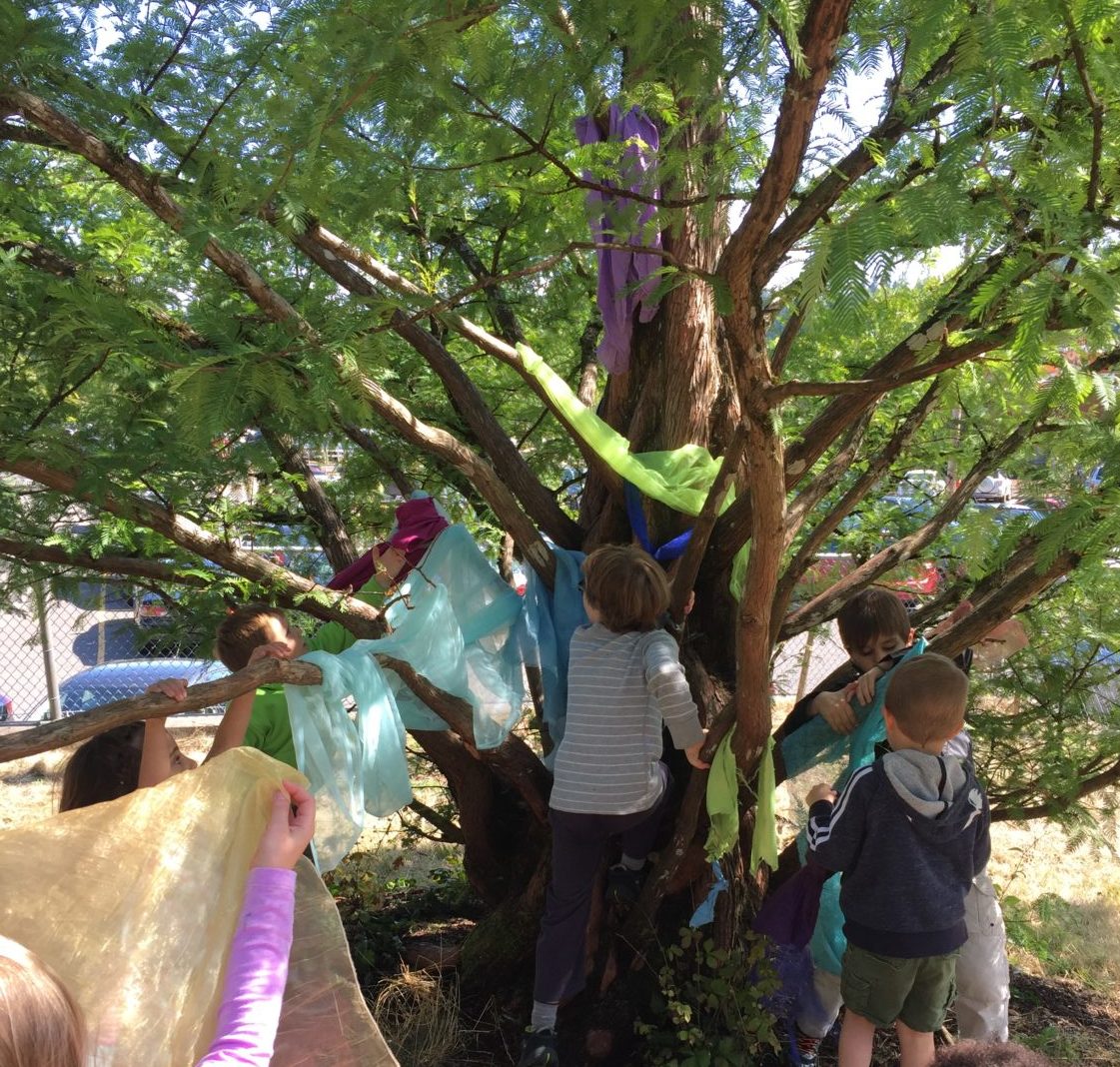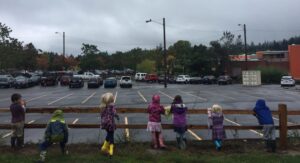Serendipity, distraction, and meaningful metaphor

First the hawk landed on the light pole right by the Lower Meadow tree, where the children were again building a treehouse, and then it glided to the pole in the middle of the nearby parking lot. All the children at the tree house ran over and were mesmerized by it: laughing; talking to it; noticing size, color, and wing span. Everyone followed the hawk with their eyes and cheered it on. The children even began talking to the hawk. Anne invited the hawk into our classroom for Story Workshop and Samantha added, “Yeah! I bet he has a story!” Michael (who had been frustrated at the treehouse) began to sing and dance. The children from the treehouse ran around the playground and invited everyone else over to see the hawk, “Look! Look! There’s a hawk!!!” Some children grabbed fabric pieces and used them in a variety of ways to celebrate our visitor. Nearly the entire class moved over to the fence and most children spent the remainder of outdoor break there, watching the hawk.

This moment was so joyful yet I noticed myself feeling tense. There were two choices in front of me; I could bring the children back to the treehouse to process or I could stand back and observe where this moment with the hawk might take us. Both options were unpredictable. I wondered about the impact of not processing in the moment at the treehouse. Was I allowing the children to be distracted; avoiding the discomfort of navigating a disagreement together? Were we missing a conflict resolution that might be meaningful?However, I also noticed that celebrating the hawk was bringing children together who had been at odds just moments before. This seemed impactful to me. I wondered about the children and myself as super-encounterers. Specifically, what might come of this joyful moment with the hawk if I let it go uninterrupted? Will this moment inspire later insight that might provide our community with fresh ideas for remaining open while navigating conflict? As a teacher, how might I remain a super-encounterer? Striving to be open to unexpected ideas and possibilities that the children present?
After this experience, Lauren and I have been curious about our next steps as teachers. What other “hawks” are we encountering as a community in moments of discomfort and uncertainty? How might the hawk serve as a metaphor for other moments of serendipity and wondrous happenstance? How might a chance encounter propel us on a journey of reconnection and research of the hawk? How might our interest in the unknown and the spectacular support us on a collective mission to uncover more: about the hawk, ourselves, each other, and the we that I am?
These questions are ongoing for us. We wonder: What “hawks” are you encountering in moments of conflict and problem-solving?
